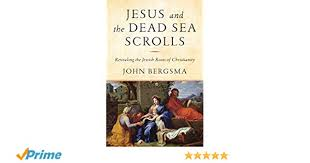Part Three: The Eucharist and the Scrolls (Part Two)
This difference between the two calendars, whereby the Essenes celebrated it on Tuesday but “the Jews” four days later on Saturday, explains the four day difference between Mark’s and John’s accounts of the anointing at Bethany we noted at the start of this chapter (94 and 104). Bergsma’s next deduction is of great significance:
“A Tuesday evening Last Supper would also explain the otherwise inexplicable fact that the early Church observed a fast on Wednesdays to commemorate the arrest of the Lord on that day. Since no one could conclude from the Gospels that the Lord’s arrest was on Wednesday, this practice must have been based on independent tradition. Furthermore, two early Church Fathers, Epiphanius of Salamis and Victorinus of Pettau, relate a tradition that the Last Supper was on a Tuesday (104).”
This shows that the Church tradition faithfully retained true information which not only is not in the Gospels, but in fact can be used to correct the Gospels, since they were not written as exhaustively complete statements of the faith.
{I will briefly note that Epiphanius of Salamis does indeed pass on such a tradition (although he does not seem to be aware that there were two calendars, and it is hard to see how he would be). Now, many writers assert that Victorinus also does so, but – in translation – what Victorinus in fact says seems to me to be different, but I shall have to check that. But I shall explore that, perhaps, in an academic article. I always find it advisable that when one is giving references to ancient or obscure authors for an important point, one should cite the author, and do so in both the original language as well as in translation.}
Also important is Bergsma’s next point, that this hypothesis of the dating of the Last Supper would allow a plausible amount of time for all which seems to have been done in about twelve hours (the hearings before Annas, Caiaphas, the Sanhedrin, Pontius Pilate, Herod, and with Pilate before a large crowd, the negotiation between Pilate and the Jewish authorities, plus all the events of the Passion itself) (105-106). In passing, the fact that John gives the most detailed account (105) chimes in with my own view that St John was supplementing and correcting the Synoptics. Where he departs from the Synoptics, my general rule is that St John is correct.
If this is correct, there is an interesting corollary: the Gospels present a seamless picture which presents the reality of the Passion, although telescoping the events of three days into one. This strikes me as very important: it helps to explain the minor discrepancies between the Gospels, for the evangelists were probably not particular about some details, and saw no need to be. Along these lines, Bergsma states: “None of the Gospels records all of these events in sequence, so it is clear that each author is exercising some literary freedom and relating the events of the Passion selectively” (106).
Also significant is that it “providentially” occurred, Bergsma’s word, that: “Jesus both gave himself sacramentally in the Upper Room on Passover and gave himself physically on the cross on Passover – each by a different calendar” (107).
The final chapter in Part Three is headed: “Putting it all together: Reading the Last Supper in Light of the Scrolls.” Bergsma notes that the Essenes did not participate in the Temple sacrifices, seeing the Temple as “defiled,” and the Lord is never shown sacrificing there (112). Although Bergsma does not pursue this aspect, I will add that that the this does not prove that He did not, but it is consistent with the correspondences we have seen between the Lord and His circle, and the Essenes; it is therefore suggestive that He did not sacrifice at the Temple. Incidentally, it may well be that the Essenes did have sacrifices of their own (112), this is significant, because it means that sacrifice was not necessarily tied to the Temple in ancient Judaism.
Bergsma suggests that the Lord’s washing of the apostles’ feet, following their having bathed (John 13:10) had “priestly connotations,” as priests were obliged to wash their hands and feet before entering the sanctuary to offer sacrifice (113, referencing Exodus 30:19-21). Obviously, then: “Jesus was, in fact, leading the disciples into a kind of sanctuary to show them how to perform a new sacrifice for a new covenant,” (113).
At the Last Supper itself, to give thanks over food meant to bless it, a priestly act in Qumran (114). When Our Lord spoke of “remembrance” He was echoing the Old Testament “Remembrance” or “Memorial” offering of Leviticus 24:7, for which Psalms 38 and 70 were written, and that the Lord’s words could be translated: “Do this as my memorial offering,” (115). In Israel, remembrance is related to the covenant, to “remember the covenant” is to remember and act upon the covenant’s obligations, as is shown by the hymn of Zechariah which we call the “Benedictus” (Luke 1:72-73, 115). This means that:
“… Jesus is performing a liturgical covenantal act with this meal. Over the wine, Jesus says, “This cup which is poured out for you is the new covenant in my blood.” A covenant is “the extension of kinship by oath,” in other words, a family relationship formed by swearing an oath (115).”
Bergsma confirms the understanding that the Lord was establishing a new covenant with the Twelve Apostles representing the new Israel (twelve tribes), so that they represent both the many (the community) and the all of Luke 22:20 (all the Twelve, 116-117). Further, in Luke 22:28-30, the verb “to covenant” is often translated as “to appoint,” but the Lord has said “I covenant to you as my Father covenanted to me …” (118). The Lord’s presiding at the Last Supper was both priestly and royal (119).
Our next topic is matrimony and celibacy.
Joseph Azize, 31 October 2019
